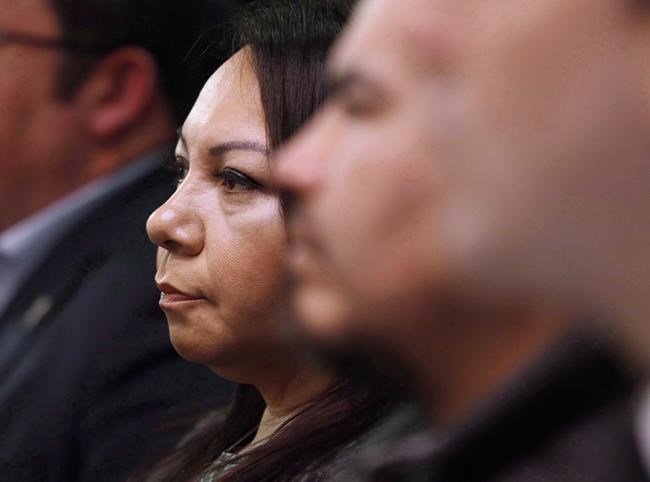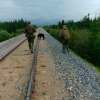Manitoba manhunt shows lack of resources for missing Indigenous women: advocates
Advertisement
Read this article for free:
or
Already have an account? Log in here »
To continue reading, please subscribe:
Monthly Digital Subscription
$19 $0 for the first 4 weeks*
- Enjoy unlimited reading on winnipegfreepress.com
- Read the E-Edition, our digital replica newspaper
- Access News Break, our award-winning app
- Play interactive puzzles
*No charge for four weeks then billed as $19 plus GST every four weeks. Offer only available to new and qualified returning subscribers. Cancel any time.
Read unlimited articles for free today:
or
Already have an account? Log in here »
Hey there, time traveller!
This article was published 31/07/2019 (1977 days ago), so information in it may no longer be current.
WINNIPEG – Helicopters and a specialized military aircraft scoured from the air while armed police took to the ground over northern Manitoba in a hunt for two suspects of murders in British Columbia.
Some advocates say it’s a stark contrast to resources applied to searches for missing and murdered Indigenous women and girls.
“It is a little bit eyebrow raising because of the different response,” says Sheila North, a former grand chief and advocate for missing and murdered Indigenous women.

“The effort that they are going through to try and find them … could trigger a lot of things for people who do their own searches.”
The massive manhunt has gripped the country since Bryer Schmegelsky, 18, and Kam McLeod, 19, were named last week as suspects in three killings. Vancouver researcher Leonard Dyck and Australian Lucas Fowler and his American girlfriend Chynna Deese were found dead last month in northern B.C.
In an email Thursday, RCMP spokesperson Sgt. Marie Damian said solving the cases of missing and murdered Indigenous women and girls is a priority for RCMP and officers investigate them on a daily basis. The search in northern Manitoba involves a “potential imminent danger to Canadians at large,” she said.
“To compare the resources being devoted to an isolated emergency, and those devoted to an ongoing issue, would be inappropriate.”
The RCMP said it’s too early to estimate the cost of the ongoing search.
North said it’s important the suspects are caught because they could pose a serious risk to the public.
But she wonders where the same sense of urgency is when an Indigenous woman or girl can’t be found.
North recalls the case of Jennifer Catcheway in 2008. She was last seen in Portage la Prairie, Man. on the night of her 18th birthday. When Wilfred and Bernice Catcheway notified police their daughter was missing, they were told she was probably out partying, North said.
For more than a decade, the Catcheways have conducted their own search of rivers, lakes, forests and nearby First Nations.
North says she’s also reminded of 51-year-old grandmother, Mildred Flett, who was last seen in Winnipeg in 2010. Her ex-husband has said it was difficult to get police to pay attention to her case.
Flett was from the Testaskweyak Cree Nation in Split Lake, Man., where missing person posters of her remain. Schmegelsky and McLeod were spotted in the same community before a vehicle they were travelling in was found in nearby Gillam, leading police to focus their search in that area.
North said there are more than 1,200 relatives of missing and murdered Indigenous women and girls watching as Mounties do everything they can to find the two murder suspects. They may also be wondering why they couldn’t have received more help, she adds.
“Families that do their own searches are feeling a little bit let down and not respected in the same way as these other families are,” she said.
Darlene Okemaysim-Sicotte has seen many families struggle to organize searches as the co-chair of Iskwewuk E-wichiwitochik (Women Walking Together), a grassroots group that supports families of missing and murdered Indigenous women in Saskatchewan.
Her cousin, Shelley Napope, 16, was murdered by serial killer John Martin Crawford in 1992.
Okemaysim-Sicotte says she supports efforts to find Schmegelsky and McLeod and that no life is worth more than another.
But the manhunt for them has made it clear that there is the means, money and public support to conduct a large-scale search when needed, she says.
Okemaysim-Sicotte hopes people will remember that the next time an Indigenous woman or girl is missing.
“The world is watching it, she says.











